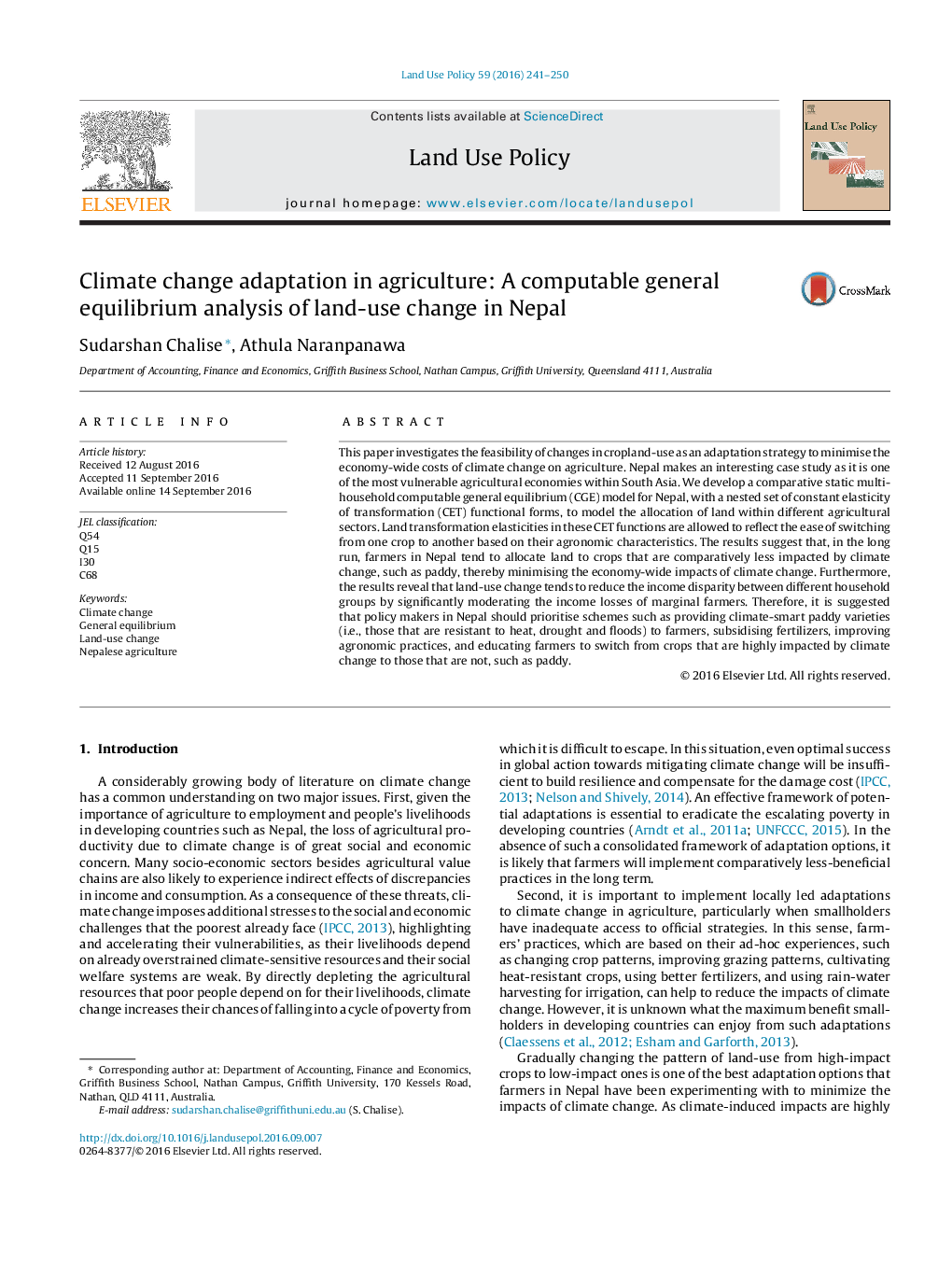| کد مقاله | کد نشریه | سال انتشار | مقاله انگلیسی | نسخه تمام متن |
|---|---|---|---|---|
| 6461520 | 1421824 | 2016 | 10 صفحه PDF | دانلود رایگان |
- A computable general equilibrium (CGE) model is framed for land-use change.
- Farmers tend to use more land to crops that are less impacted by climate change.
- Land-use change tends to minimise the economy-wide impacts of climate change.
- Land-use change tends to reduce the income gap between different household groups.
- Climate-smart crops and improving agronomic practices are recommended.
This paper investigates the feasibility of changes in cropland-use as an adaptation strategy to minimise the economy-wide costs of climate change on agriculture. Nepal makes an interesting case study as it is one of the most vulnerable agricultural economies within South Asia. We develop a comparative static multi-household computable general equilibrium (CGE) model for Nepal, with a nested set of constant elasticity of transformation (CET) functional forms, to model the allocation of land within different agricultural sectors. Land transformation elasticities in these CET functions are allowed to reflect the ease of switching from one crop to another based on their agronomic characteristics. The results suggest that, in the long run, farmers in Nepal tend to allocate land to crops that are comparatively less impacted by climate change, such as paddy, thereby minimising the economy-wide impacts of climate change. Furthermore, the results reveal that land-use change tends to reduce the income disparity between different household groups by significantly moderating the income losses of marginal farmers. Therefore, it is suggested that policy makers in Nepal should prioritise schemes such as providing climate-smart paddy varieties (i.e., those that are resistant to heat, drought and floods) to farmers, subsidising fertilizers, improving agronomic practices, and educating farmers to switch from crops that are highly impacted by climate change to those that are not, such as paddy.
Journal: Land Use Policy - Volume 59, 31 December 2016, Pages 241-250
